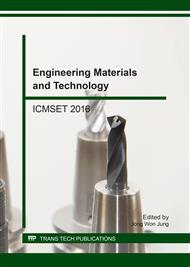p.294
p.299
p.307
p.313
p.320
p.329
p.335
p.341
p.347
Mechanical Properties of PM CNT-Dispersed Cu Composite
Abstract:
Microstructural and mechanical properties of powder metallurgy (PM) with carbon nanotube (CNTs) dispersed copper (Cu) composites were investigated in detail. Pure copper powder was coated with un-bundled CNTs by using the zwitterionic surfactant solution containing CNTs. The powder rolling process was applied to increase the powder surface area to be coated with CNTs. The total rolling reduction of Cu-CNT composite powder by 5 steps rolling was about 75%. With increasing the number of rolling steps, the content of CNTs coated on the Cu powder surface increased because of the increment of the flat surface area of flaky Cu rolled powder. As a result, the CNT content was 0.67mass% after 5 steps powder rolling. It was about twice as that of as-coated Cu-CNT composite powder without rolling. The grain size of PM extruded Cu-CNT composite was about one fifth of that of the extruded monolithic Cu material without CNT. Yield stress of the extruded Cu-CNT composite via the rolling process was 192 MPa, which is about twice that of the extruded monolithic Cu material (88 MPa). CNTs distributed at primary particle boundaries were effective to prevent the grain coarsening by their pinning effects, and this grain refinement was the main strengthening factor of the Cu-CNT composite via rolling process.
Info:
Periodical:
Pages:
320-325
Citation:
Online since:
June 2017
Authors:
Price:
Сopyright:
© 2017 Trans Tech Publications Ltd. All Rights Reserved
Share:
Citation:


